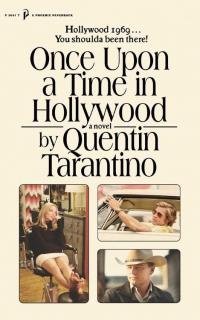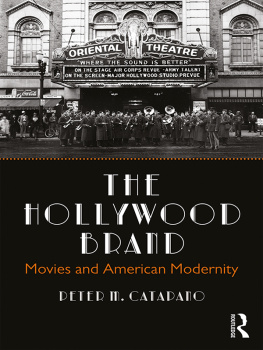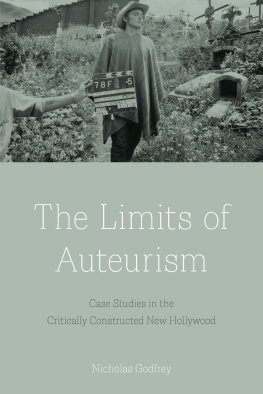Thank you for purchasing this Simon & Schuster eBook.
Sign up for our newsletter and receive special offers, access to bonus content, and info on the latest new releases and other great eBooks from Simon & Schuster.

or visit us online to sign up at
eBookNews.SimonandSchuster.com

ALSO BY PETER BISKIND
Down and Dirty Pictures:
Miramax, Sundance, and the
Rise of Independent Film
The Godfather Companion
Seeing Is Believing: Or, How Hollywood
Taught Us to Stop Worrying and
Love the Fifties


Simon & Schuster Paperbacks
Rockefeller Center
1230 Avenue of the Americas
New York, NY 10020
www.SimonandSchuster.com
Copyright 1998 by Peter Biskind
All rights reserved,
including the right of reproduction
in whole or in part in any form.
SIMON & SCHUSTER PAPERBACKS and colophon are registered
trademarks of Simon & Schuster, Inc.
Designed by Karolina Harris
Photo Research by Natalie Goldstein
Manufactured in the United States of America
9 10 8
The Library of Congress has cataloged the
hardcover edition as follows:
Biskind, Peter.
Easy riders, raging bulls: how the sex-drugs-and-rock n roll
generation saved Hollywood/Peter Biskind.
p. cm.
Filmography: p.
Includes bibliographical references and index.
1. Motion picture producers and directorsUnited States
Biography. 2. Motion picturesUnited StatesHistory. I. Title.
PN1998.2.B56 1998
791.43 0233 092273dc21
[B] 98-2919 CIP
ISBN-13: 978-0-684-80996-0
eISBN-13: 978-1-4391-2661-5
ISBN-10: 0-684-80996-6
ISBN-13: 978-0-684-85708-4 (Pbk)
ISBN-10: 0-684-85708-1 (Pbk)
Acknowledgments
HOLLYWOOD is a town of fabulators. The people who dwell there create fictions for a living, fictions that refuse tidily to confine themselves to the screen, but spill over into the daily lives of the men and women who regard themselves as stars in the movies of their own lives. Although this book tells readers altogether more than they may wish to know about the Hollywood of the 70s, I do not flatter myself that I have arrived at the truth. At the end of this long, twisted road I am once again struck with the force of the old maxim, the more you know, the more you know what you dont know. This is particularly true in the case of Hollywood, where despite the reams of memos and contracts that now gather dust on the shelves of university libraries, very little of what really matters is committed to paper, so that an endeavor of this sort is dependent on memoryin this case of an era twenty or thirty years in the past. Not only is the terrain distant, but in this period memory has been enfeebled by booze and drugs.
In a town where credit grabbing is an art form, to say that memory is self-serving is to say that the sun rises in the east and sets in the west. Moreover, defect of memory is a shield that enables people to go to work in the morning, protecting them from the unspeakable behavior that is taken for granted there. As director Paul Schrader puts it, In this business, youve got to have a selective memory. Otherwise, its too painful. Kurosawas Rashomon remains one of the truest movies about the movies and the people who make them.
In this maze of mirrors, lucky is the chronicler who does not lose his or her way in the infinity of reflections. So despite the wealth of bizarre and lurid detail to come, be assured that this book merely scratches the surface. The elusive truth is stranger still.
Many, many people in Hollywood were anxious to have the story of this decade told. As producer Harry Gittes puts it, I want my children to know what I did. These were the best years of their lives, the years they did their finest work, and they were more than generous with their time and encouragement, always willing to make the phone calls that paved the way for yet more interviews. They know who they are, and I am infinitely grateful to all of them.
In addition, I wish to acknowledge the generous help and support of the current and previous staffs of Premiere magazine, where I happily worked while researching and writing this book, particularly the founding editor-in-chief, Susan Lyne, for giving me the freedom I needed, as well as Chris Connelly, for teaching me the importance of the National Enquirer, Corie Brown, Nancy Griffin, Cyndi Stivers, Rachel Abramowitz, Terri Minsky, Deborah Pines, Kristen ONeil, Bruce Bibby, John Clark, Marc Malkin, Sean Smith, and the current editor, Jim Meigs. Many more helped me with research and transcribing, and among them I would like to thank John Housley, Josh Rottenberg, and Susanna Sonnenberg.
Michael Giltz fact-checked the book, and Natalie Goldstein researched the photographs. Sara Bershtel, Ron Yerxa, John Richardson, Howard Karren, and Susan Lyne read the lengthy manuscript and gave me invaluable editorial help, and in this regard I would particularly like to thank Lisa Chase and Susie Linfield. George Hodgman made this book happen when he was at Simon & Schuster, Alice Mayhew gave it her blessing, and Bob Bender, along with his assistant, Johanna Li, helped it to see the light of day. My agent, Kris Dahl, guided me through the shoals of writing and editing.
Finally, I would like to thank my wife, Elizabeth Hess, and daughter, Kate, for their unfailing patience and support.
For Betsy and Kate

Contents
Introduction:
Knockin on Heavens Door
Some friends of mine were saying the 70s was the last Golden Age. I said, How can you say that? They replied, Well, you had all these great directors making picture after picture. You had Altman, Coppola, Spielberg, Lucas....
MARTIN SCORSESE
February 9, 1971, 6:01 in the morning. A scattering of cars, headlights glowing fuzzily in the predawn gloom, had just begun to navigate the freeways as the first commuters sleepily sipped coffee out of Styrofoam cups and listened to the early morning news. A high of 71 degrees was expected. The Manson trial, now in the penalty phase, was still titillating the city of Los Angeles. Suddenly, the ground started to shake violently, not like the rolling, almost soothing motion of previous earthquakes. This was an abrupt heaving and falling that was terrifying in its intensity and duration, threatening to go on forever. For many, the 6.5 quake felt like the Big One. Mansons girls would claim later that Charlie himself had brought it down on the sinners tormenting him.
Over in Burbank, , looked out the window, he recalls. Everything was shaking. Lightning was slashing across the skyit was the electric wires from the telephone poles, falling down. It was terrifying. I thought, I gotta get outta here. By the time I pulled on my cowboy boots, got my money and the key to the motel room, and made it to the door, it was over. I went to the Copper Penny, and while I was having coffee, there was a big aftershock. I got up to run, and a guy looked at me and said, Where are you going to go? I said, Youre right. Im stuck.
Next page
















